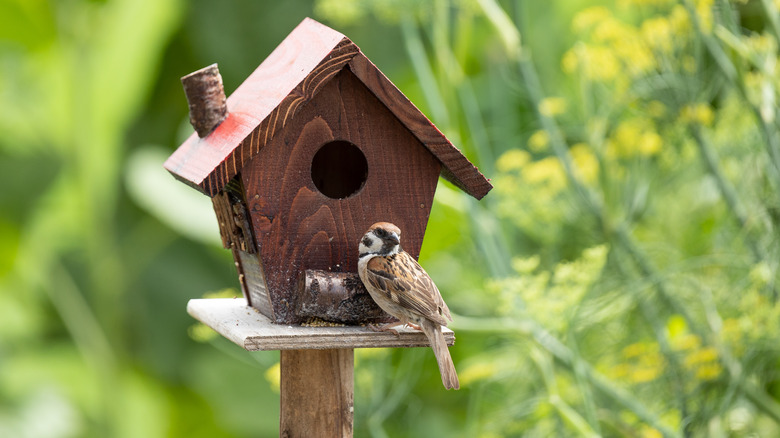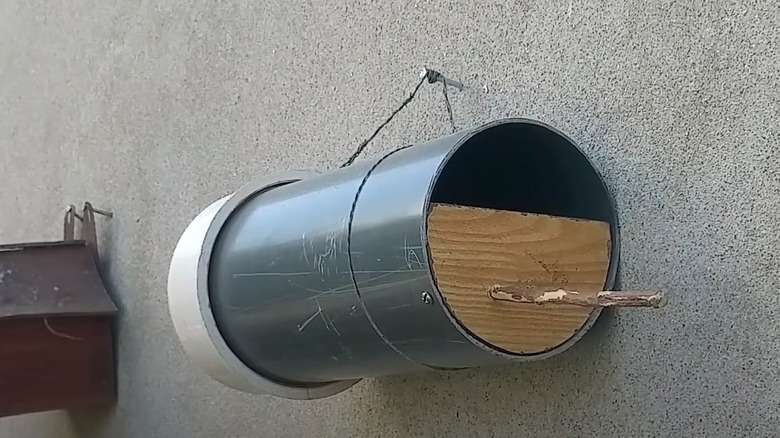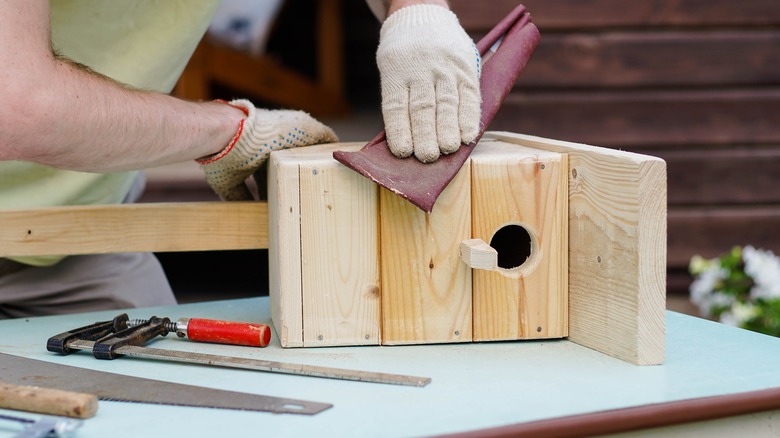Using These Materials When Building A Birdhouse Is A Big Mistake
We may receive a commission on purchases made from links.
If you're considering using an old PVC pipe of any type to craft a DIY birdhouse, think twice before doing so. While it may seem like a great idea, especially if you see it circulating on social media platforms like TikTok, using such material could potentially endanger the birds that decide to use it as a home. However, it's not the only one that you should be avoiding. In addition to PVC, you'll also want to steer clear of metal, treated wood, acrylics, and any other type of treated materials to protect the wildlife in your garden, and give it the best chance of survival.
Naturally, if you want more birds to flock to your yard, swapping any existing shelters for safer ones would make sense. This way, you'll be keeping any visiting wildlife that visits happy. But what is it that makes some of these such a big mistake? We'll break it down below.
The materials aren't good for the birds
Let's start with the PVC. The main reason you will want to avoid it is due to the potential extreme temperature fluctuations that it would create inside, which may be detrimental for the birds no matter their age. For example, if settings get too cold, then they could even freeze to death, which isn't great news seeing as there has been a decrease of 2.9 billion birds between 1970 and 2019, per Cornell University. This makes it a very unsuitable habitat, and you'll want to avoid metal and acrylic for the same reason. As for treated or pressure-treated wood, the chemicals found inside it are toxic to birds and can cause detrimental effects.
If you have any boxes containing these materials in your garden already, then it would be best to remove them as soon as possible, as long as they're empty. However, if you find it challenging to know if your birdhouse is made from any of these compromising materials, there are ways to check. One way is to use your nose to identify a chemically or oily scent. Likewise, you should keep your eyes peeled for the names Bor, ACQ, or FDN, which signal chemicals are present in the wood, or any tags, in which case you can cross reference any names. You may not always be able to see this on a birdhouse, so you may want to toss it unless you're sure it's untreated.
Use regular, untreated wood
If you want to support birds that visit your yard, you'll need to use more suitable materials, such as cedar, pine, or any other type of untreated wood. This works better as it's a better insulator than the other materials, which will help birds while temperatures fluctuate. If you're unsure where to get some, you should be able to find some at your local hardware store or from Home Depot for $28.86. Once you have the correct wood on hand, you can get to work making your birdhouse.
Alongside the wood, you also have the option to add some extra warmth by adding nesting materials such as dry grass, which can be used for wildlife to stay toasty. If you want to use something else, just ensure it's safe and that it will do a good job. You can still add your touches, such as painting it with water-based paints or adding some extra decor such as little ladders or stick-on numbers.


